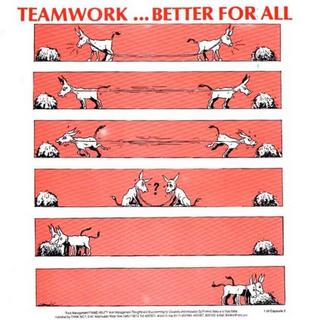Revisiting my old concepts
Can't believe I drew the drawings shown below... I still hold that against the views of most professionals and consultants. And thats tru for not only organisations but almost every process.
A new business starts having the complete randomness, the ambiguity is rife and people disoriented unaware of the priorities and culture of work.
But this bunch of people posses one of most rare strengths- The agility, The flexibility to orient themselves quickly to any direction based on the dynamic environment.
After some 2-3 years, this bunch of people calling themselves an organisation grow but formulate some rules and develop some sort of understanding which we call the nascent culture of the organisation.However, they start loosing their speed and agility though clearing many ambiguities in the process.
The third picture shows that post 3 years, the organisation becomes desperate to standardise its processes which seriously hampers its flexibilty it used to flount. The top management becomes uneasy but ambiguity is removed completely. However, this hampers the peoples ability to change and they form their own functional silos.
And last picture shows the organisations goal to achieve its old agility while still having processes which allow systematic work. This happens when they work for sytemising the change and change becomes part of their life. The picture 4 is a result of indefinite optimisation of the processes of picture 3.
The beauty of this organsiation is the underlying pattern in the seemingly random processes.
I wonder if any organisation has reached this level but would definitely want to create one....
A new business starts having the complete randomness, the ambiguity is rife and people disoriented unaware of the priorities and culture of work.
But this bunch of people posses one of most rare strengths- The agility, The flexibility to orient themselves quickly to any direction based on the dynamic environment.
After some 2-3 years, this bunch of people calling themselves an organisation grow but formulate some rules and develop some sort of understanding which we call the nascent culture of the organisation.However, they start loosing their speed and agility though clearing many ambiguities in the process.
The third picture shows that post 3 years, the organisation becomes desperate to standardise its processes which seriously hampers its flexibilty it used to flount. The top management becomes uneasy but ambiguity is removed completely. However, this hampers the peoples ability to change and they form their own functional silos.
And last picture shows the organisations goal to achieve its old agility while still having processes which allow systematic work. This happens when they work for sytemising the change and change becomes part of their life. The picture 4 is a result of indefinite optimisation of the processes of picture 3.
The beauty of this organsiation is the underlying pattern in the seemingly random processes.
I wonder if any organisation has reached this level but would definitely want to create one....





